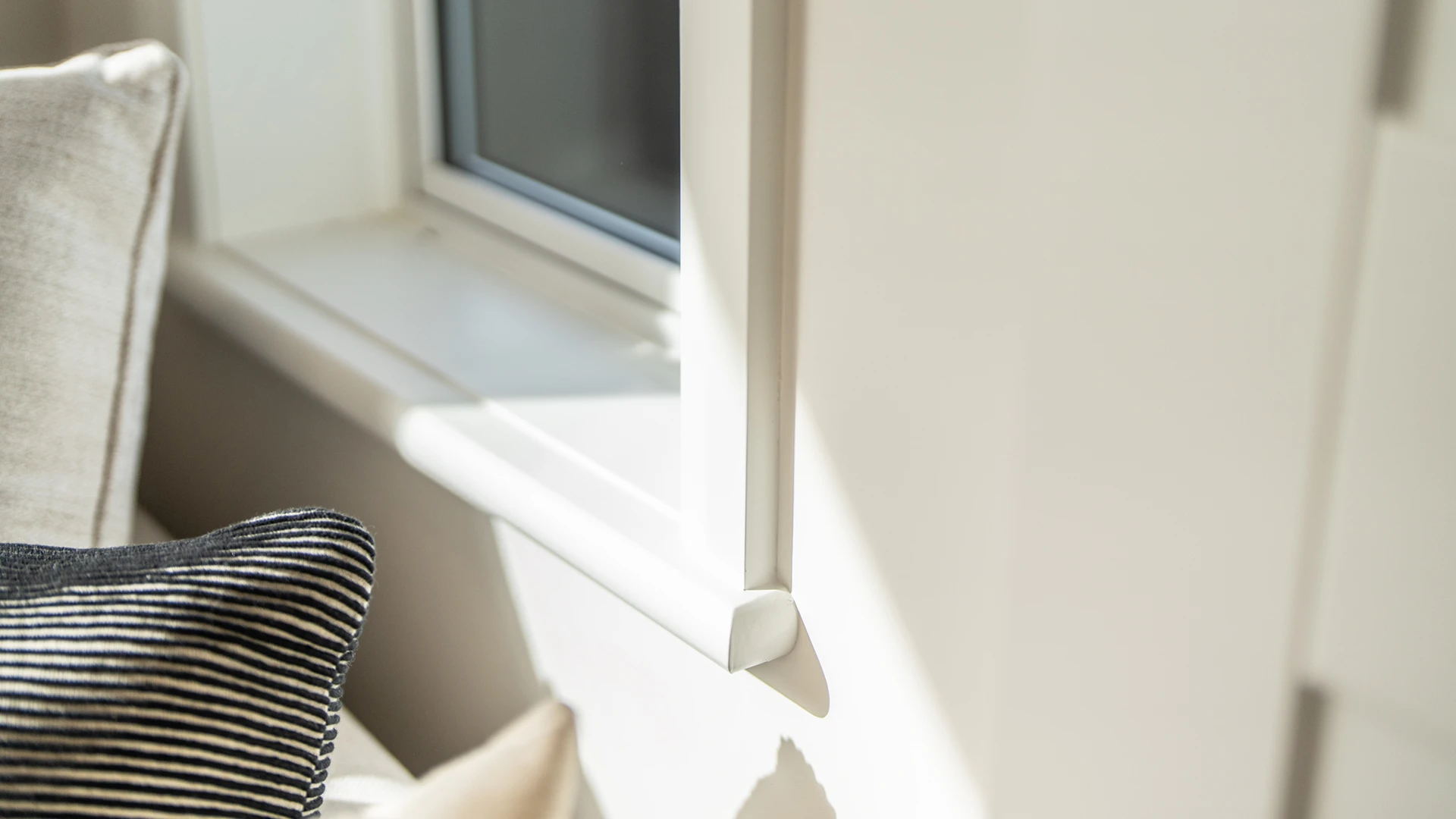
- Store reveals in a dry, well-ventilated area prior to installation to prevent moisture uptake.
- Ensure all surfaces are clean, dry, and free from dust, dirt, grease, or other contaminants.
- Lightly sand the surface to remove any defects or handling marks.
- Fill nail holes, joints, and surface defects with a suitable timber filler, then sand smooth.
- Apply a premium-quality primer/sealer to all faces and edges.
- Allow the primer to dry in accordance with the manufacturer’s recommendations before applying the topcoat.
- Apply two coats of a high-quality acrylic or enamel paint system, following the paint manufacturer’s instructions for coverage and drying times.
- Ensure all visible surfaces are fully coated to maintain a moisture barrier.
- Use light-coloured topcoats where possible, as darker colours can increase heat stress on the timber.
- Avoid installing reveals in damp or wet conditions.
- Ensure reveals are not in direct contact with masonry, plaster, or concrete without an appropriate moisture barrier.
- Immediately touch up any cut edges or damaged areas with primer and paint during installation.
- Inspect coatings annually for signs of wear, cracking, or peeling.
- Repaint or touch up as soon as any deterioration is noticed to maintain weather resistance.
- Clean surfaces periodically to prevent dirt build-up, which can affect coating performance.
- It is the painter/decorator’s responsibility to provide a satisfactory finish on Niagara reveals.
- If there are any concerns about quality issues prior to topcoat application, these must first be raised with the window fabricator and Niagara.
Select from the Resene’s CoolColour™ range the perfect colour for your timber weatherboards, which means it is possible to use slightly darker paint colours in your cladding.